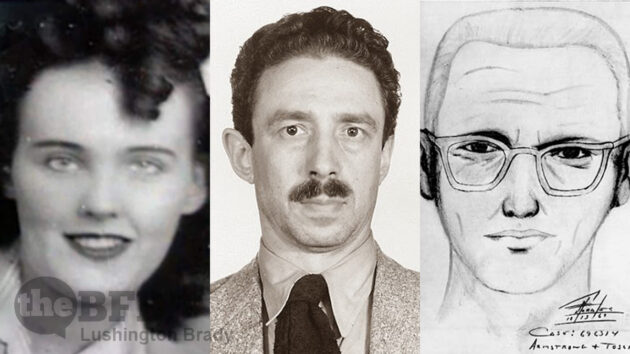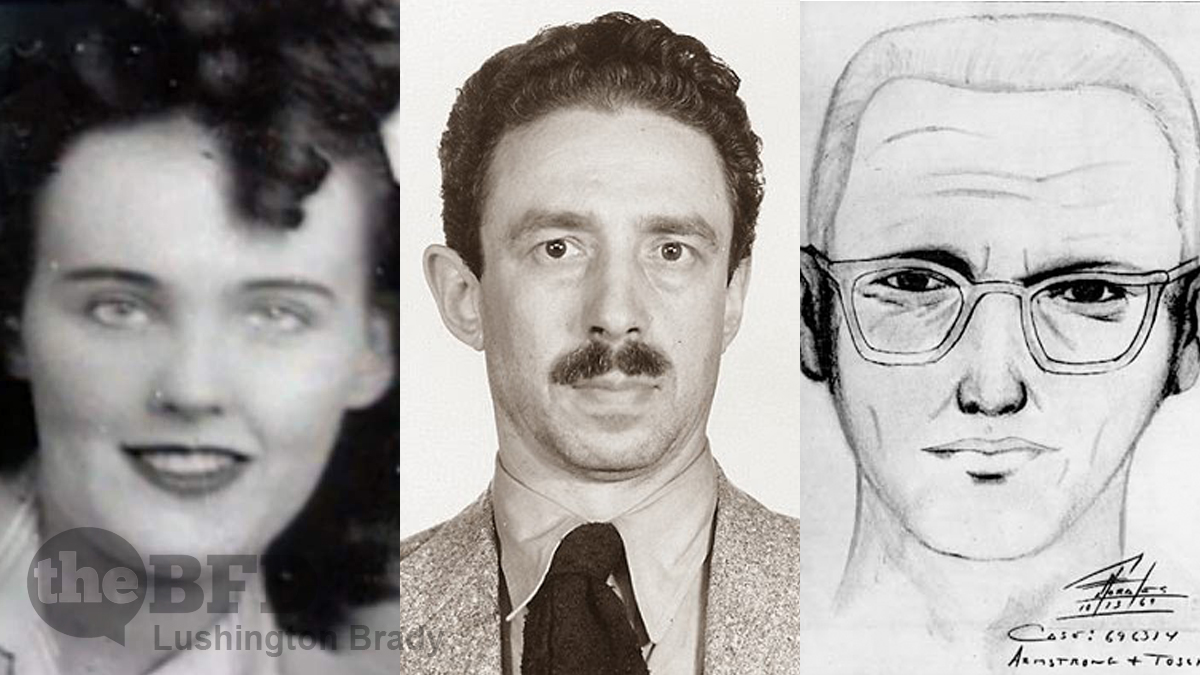The 1947 “Black Dahlia” murder could be said to be America’s “Ripper” case. The gruesome mutilation murder of a young woman has never been solved. The case exerted enormous public fascination, but on few more than a young James Ellroy, whose own mother was likewise murdered in an unsolved killing in his childhood. Ellroy’s novel The Black Dahlia is the first of his “LA Quartet”, widely regarded as his first “serious” literature.
Another person whose family history lead to fascination with the Black Dahlia case is former LAPD detective Steve Hodel. In his case, because Hodel believes his own father was the killer – not just of Elizabeth Short, the Black Dahlia, but many other women.
Dr George Hodel was ruled out as a suspect for the Dahlia killing by the original investigation, but his son suspects differently.
Hodel was a very successful doctor and was living in one of the wealthiest neighborhoods in Los Angeles. But he also had a wild side, and was well known in the Surrealist art scene, as well as the party and S&M scenes.
Hodel was highly intelligent: graduating high school at 15 and enrolling at Caltech. He was expelled the next year, for knocking up his professor’s wife. He was twice married with two children by the time he received his medical degree from UCLA, 15 years later.
He also committed bigamy in 1940 and was well known as a womaniser.
None of that got him in trouble with the law – but accusations of sexual abuse by his daughter did, in 1949.
Tamar Hodel publicly accused her father of sexually abusing her, claiming that he had forced himself on her and made her read erotica to “make me a sexual goddess”. Hodel, widely known for his over-the-top, highly sexual parties, was charged with incestuous sexual abuse against her.
Two witnesses testified against George Hodel and told the jury they had seen him force himself on his daughter. The prosecution had a third witness, but she recanted her story and refused to take the stand.
Hodel’s defense team, though, successfully smeared Tamar and the case was dismissed. Her father moved to Hawaii and yet another wife in 1950.
However, police took an interest in Hodel while investigating the murder of Elizabeth Short for a number of reasons.
First, his charges put him on a list of suspects that included known sex criminals in the area where she was found. Second, Hodel was a well-regarded doctor with some skill and knowledge of surgical procedures, and the grisly, precise incisions that the Dahlia suffered suggested someone with medical knowledge.
Moreover, several witnesses even told police they had seen Hodel and Short together, as she was reportedly one of many flings that occupied Hodel’s time.
Hodel was one of the top five suspects for the murder, though he was never charged. The police did bug his home in 1950. He was recorded saying, “Supposin’ I did kill the Black Dahlia. They can’t prove it now. They can’t talk to my secretary anymore because she’s dead. They thought there was something fishy. Anyway, now they may have figured it out. Killed her. Maybe I did kill my secretary.”
After Hodel’s death, his son, former LAPD detective Steve Hodel, began his own investigation of his father, as reported by the Guardian. Upon going through his father’s belongings, he discovered a photo album. In the back was a photo of a woman that looked just like Elizabeth Short.
Steve Hodel has been investigating the cold case and his father’s possible involvement for two decades. He now believes that his father not only committed the Black Dahlia murder, but may even have been the Zodiac Killer.


